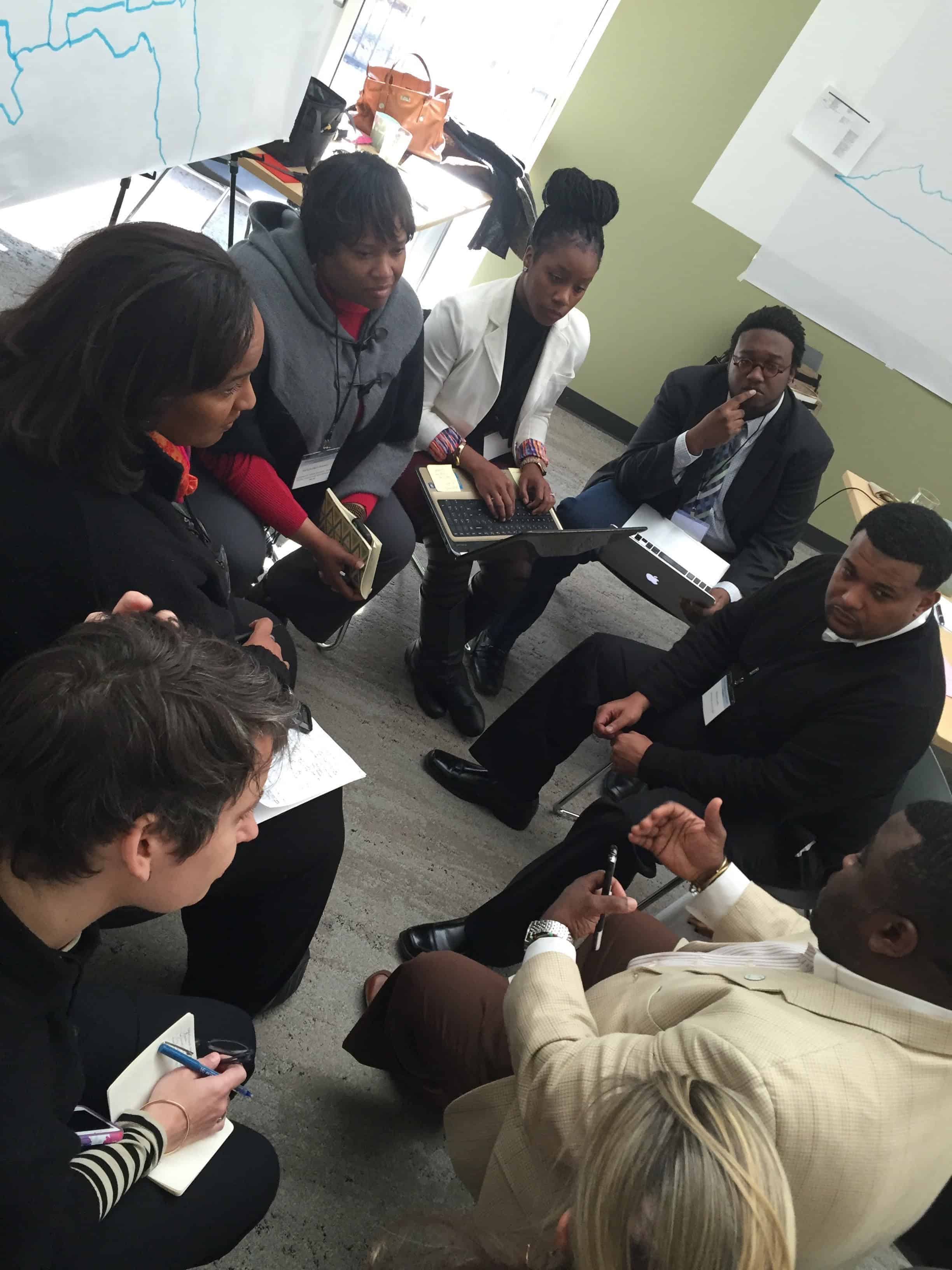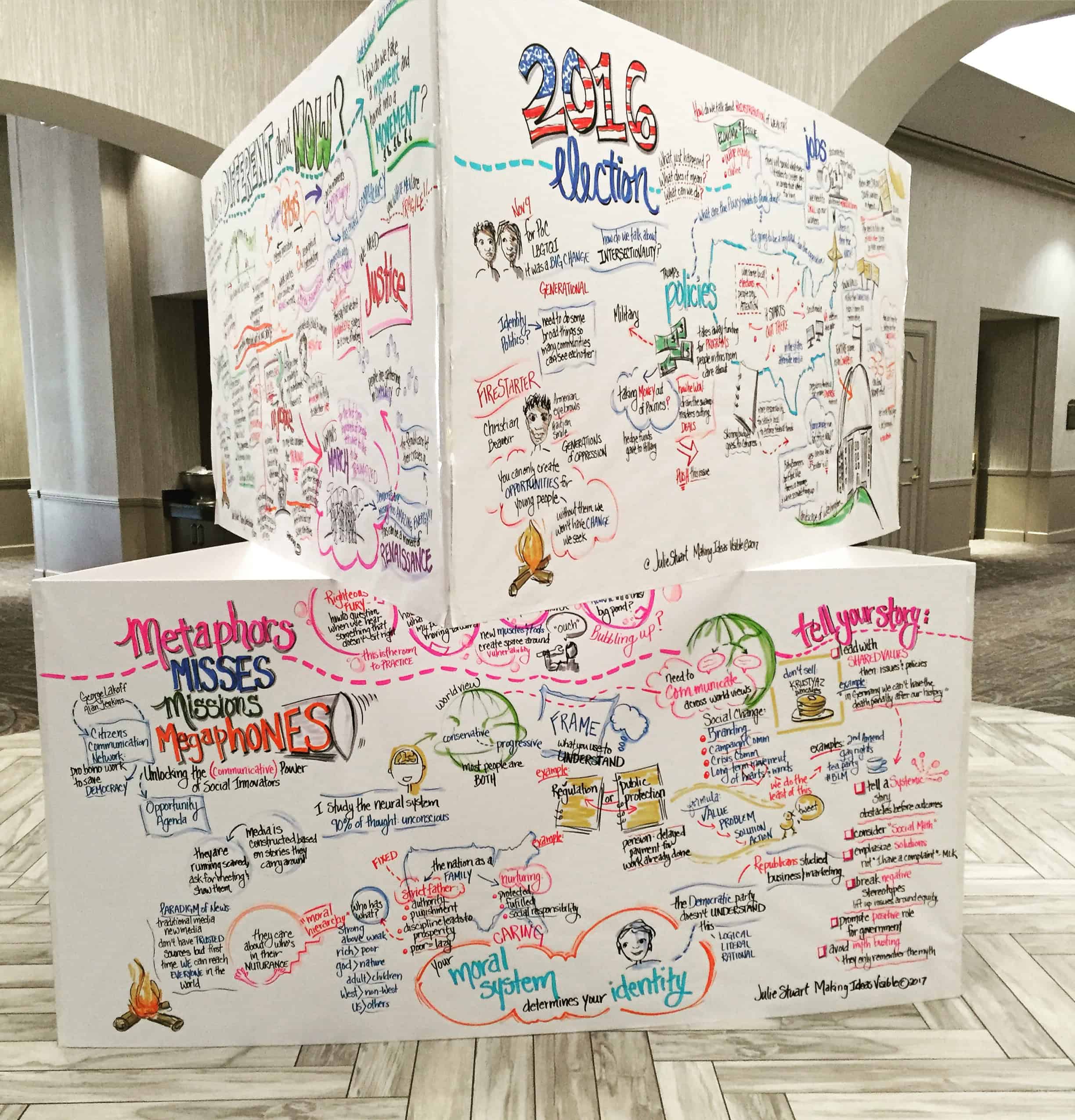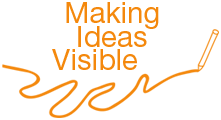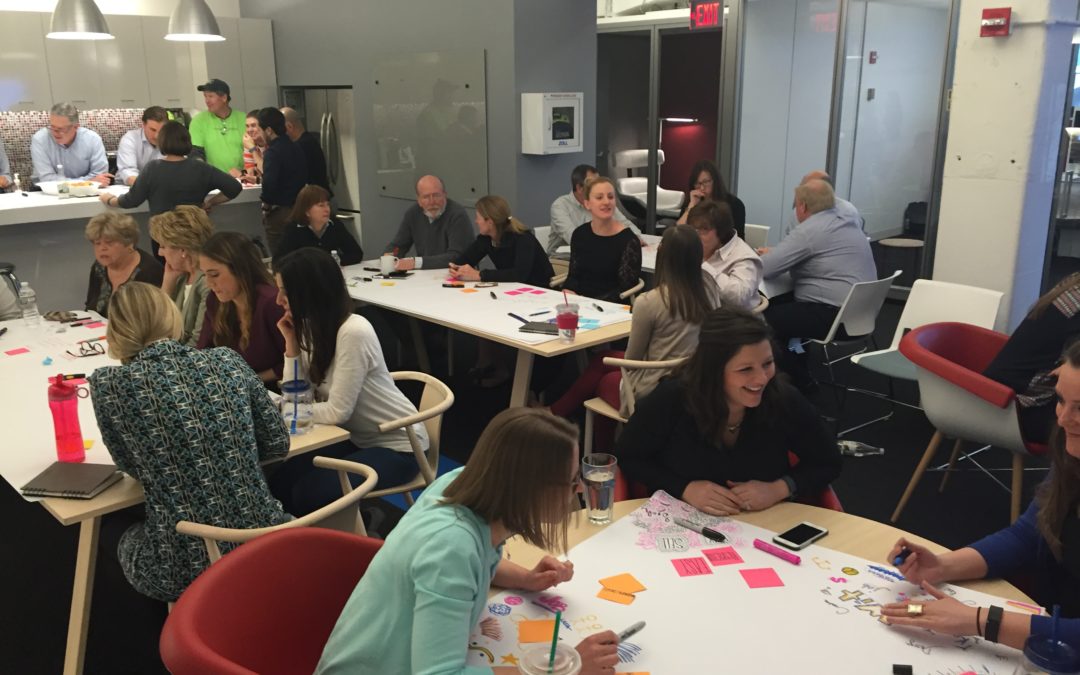Or more to the point…how engaging are your engagements? With your clients? Team? Company? Conference attendees?
As someone who’s hired to be at meetings and conferences, I’ve experienced just about everything, and I still see people with the best of intentions struggling to do engagement well. To actually deliver meetings, gatherings and conferences that engage participants meaningfully, leaving them with a sense of time well spent.
In another newsletter I’ll call out the bad/awful/let-me-outta-here stuff I’ve seen (without naming names) but for now let me give you a few ideas to incorporate into your next meeting that may invigorate the experience of your participants so that they can be more engaged, activate better thinking and leave inspired rather than fatigued.

Make it welcoming
Use home teams or buddy’s:
At a big meeting or conference give people a “home team,” either a buddy or a small group of three, to check in with and debrief their experience and learnings. This was used very effectively by a large stakeholder group assembling after the election who found their terrain had suddenly changed, and attendees were grappling both personally and professionally make sense of it.
As new insights occurred and information was absorbed, they were able to digest it with their home team instead of becoming overwhelmed, which happens quickly especially at longer meetings.
If you consciously design for this you can assist your participants to better process their experience and leave feeling invigorated rather than overwhelmed.
Make it personal
Use Firestarters:
At a recent conference with participants from many organizations, foundations and businesses working in social entrepreneurship, before each speaker or panel we had a “Firestarter” talk–someone who told a 5-10 minute personal story about how they got into the work or where they felt they had made the biggest impact with their work. These stories were inspiring and heartwarming as the telling of it felt real and relatable, and provided personal connection to the larger mission everyone was committed to.
Have a biography book or website with in-depth bio’s:
Assembling a large group who may not know each other? Create a handbook ahead of time with relevant information about your participants. Ask a couple of personal questions that allow them to share more than just their work personality. Use questions that can start conversations like:
- What keeps you up at night?
- With unlimited resources, what one thing would you do/change today?
- Whose shoulders do you stand on?

Make it mindful
Lots of meetings are incorporating various mindfulness practices like meditation, stretching and movement. Pausing for a moment to connect to the body helps to move energy from the brain back down into the body so the mind can keep learning.
Do a mindfulness practice as a warm-up:
At a conference recently the conveners pre-arranged for several of their participants to contribute a “mindfulness practice” throughout the day. One of the movements was from a tai chi practitioner of many years. He silently led 200 people through a two-minute tai chi sequence that was so profound and deep you could feel the room connecting in an unspoken way.
Make it flow
The brain can only take in about 90 minutes worth of information before it needs time to process what’s being heard. For some people it’s more like 20 minutes depending on their attention span.
So you need to move people into different situations to keep their thinking fresh. This can be from plenary to small group to one-on-one to individual reflection, or any combination of that.
It can be from one room to another. From inside to outside. Or from a large circle of chairs to small groups gathered at tables.
When I design sessions I’m always thinking about how to move people around so that we keep their minds fresh to do their best thinking.

Make it participatory
Design a World Cafe or Open Space process:
The best meetings have lots of time for participation. Instead of the “sage on the stage” approach where people are talked at all day long, give them sessions where they get to talk and contribute like a World Cafe (I design and facilitate a lot of these). Or a session where they get and give feedback on best practices or projects. Or be bold and use Open Space (similar to an unconference) where the participants get to suggest and hold meetings about what they are most hungry for. This is really powerful engagement and can surface new solutions and leadership from your participants that may surprise you.
Try a Chalk Talk:
A process that gets everyone involved quickly and silently. Goes like this: write the question that needs answering on a whiteboard (you can do 1-3 questions at a time). Everyone has a marker and silently they start writing or drawing their thoughts or follow up questions on the wall at the same time. Others will comment on those thoughts and questions. Let it happen for about 10-15 minutes until everyone stops writing. Then debrief.
And of course, Make it Visual

Give it a try or call us if you need help
If you try one of these the next time you convene a meeting, let me know how it goes. I’d love to hear about it.
And if you’re having a meeting or conference and need help with it, my favorite thing to do is design experiences for when people get together to do the work they are supported by a process that lets their creativity flow, a process that guides them into new territory in a way that feels easy and natural where their best ideas can come to life.
I recently had a client hire me because they felt I was more invested in the experience of their participants than other facilitators they talked to, and that’s high praise. For more examples of how we can help you be more engaging, swing by our Client Stories page and click on the photos to learn how we engage.
Let’s do meetings better!

